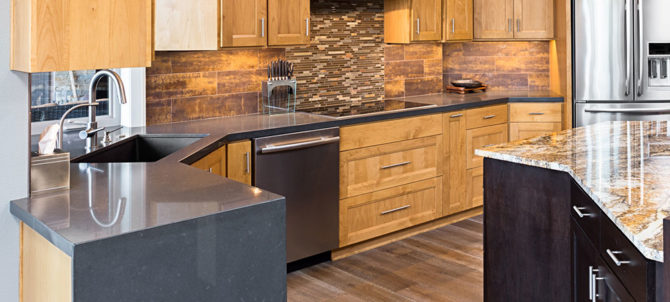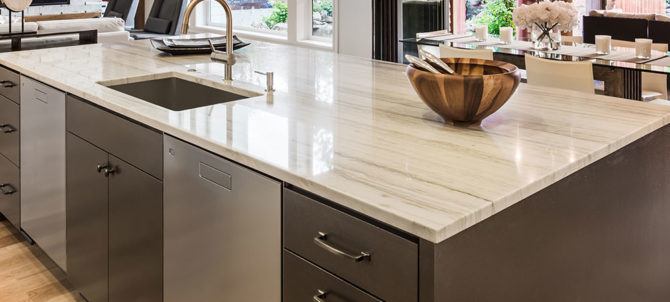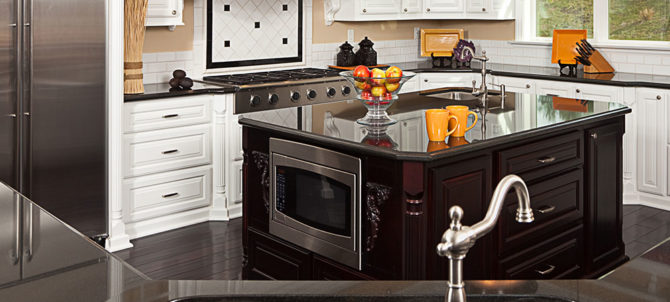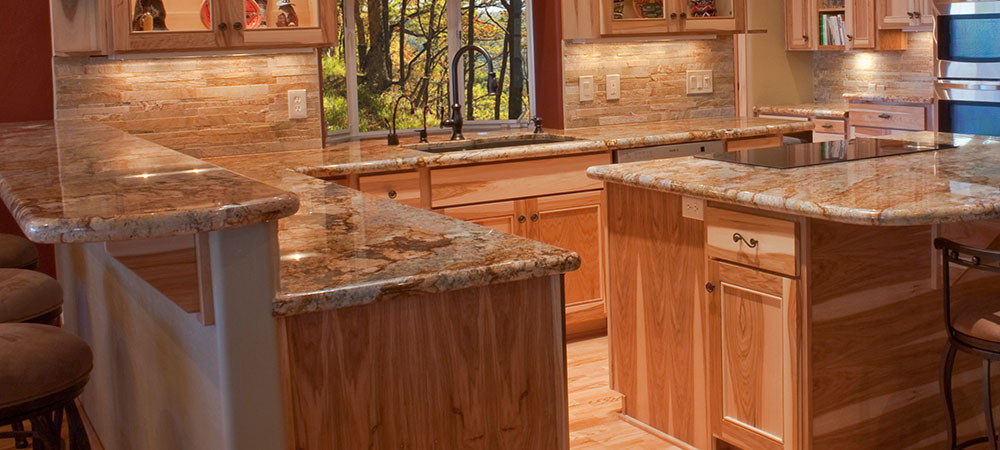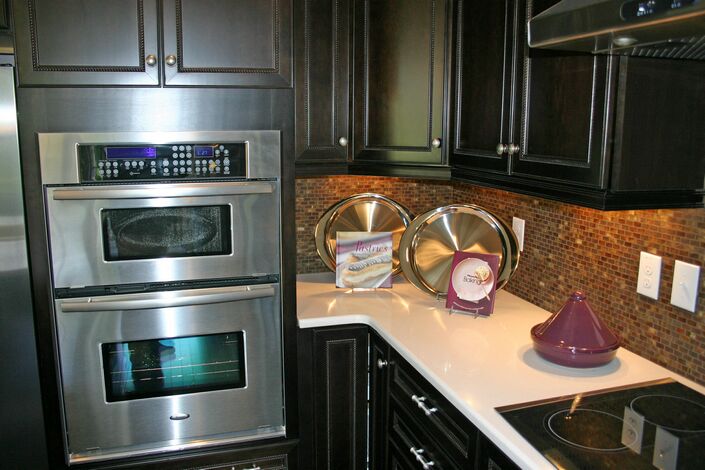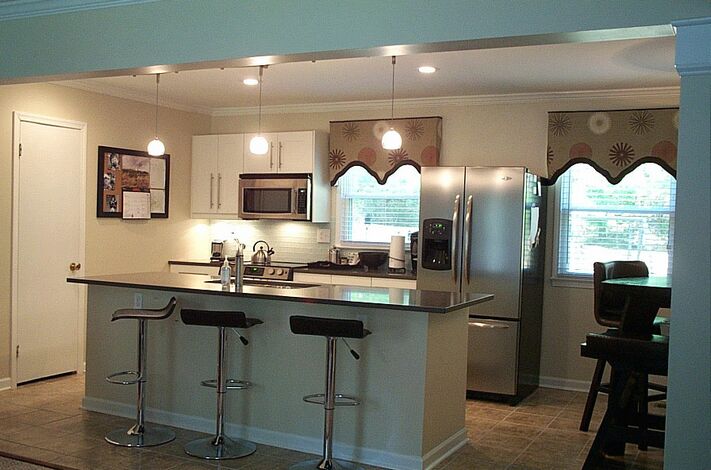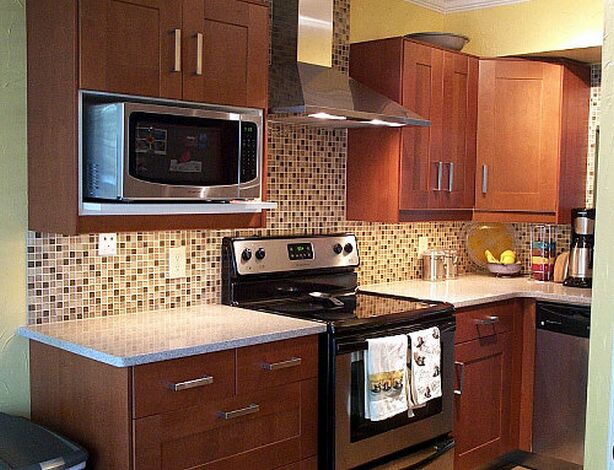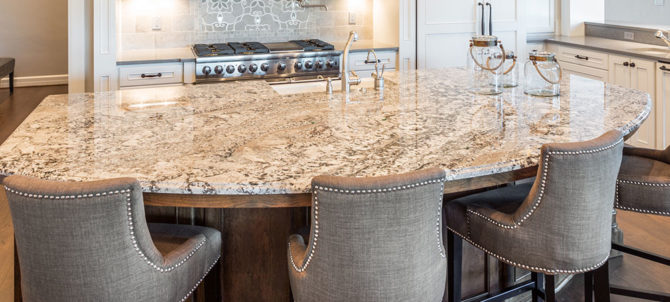
If you have worn-out or unpleasant-looking countertops, you might wonder how to improve their looks. Well, there are a number of ways to go about it. These ways include:
Install an interior film
This style of improving the look of the countertops is a relatively recent alternative in the North American market, but it has been a popular choice throughout Asia and Europe for several years. The good thing about this option is that you can update the kitchen countertop without replacing it.
It’s also quick and easy, with no noise, dust, or odors. If you want to refurbish countertops quickly and affordably, this is an excellent way to do it.
If you are a dab hand at DIY projects, you can do the work yourself, but if you aren’t a handy person, let experienced countertop replacement professionals help you.
When installing the film, ensure that the surface is smooth and clean. Additionally, no water damage or warps should be present. You also should follow the proper film application process that involves these steps:
- Make a flat surface with putty and gentle sanding.
- Prime the surface where you need more adhesion, such as corners and edges. You should note that primer application requirements differ depending on the surface.
- Measure and cut the material.
- Peel and stick the film onto the surface.
- Apply the film with a squeegee from top to bottom in a fan-shaped sweeping motion.
In most cases, refurbishing the countertop takes only a few hours. Furthermore, the vinyl layer replicates the original texture (whether it is wood, metal, or something else), so refinished worktops will be as appealing as natural ones.
When doing the installation, ensure that the countertops maintain their appearance. This calls for you to hire an experienced professional who knows what they are doing and will expertly install the surfaces.
Install a layer of concrete on your surfaces.
If you don’t like your countertops, you can pour concrete on them. The cool thing is that concrete is highly adaptable; you may modify the color, stain, texture, and even shape.
It is also pretty simple to make. You’ll need a mold and a frame to support the future countertop. Make a strong support because concrete is heavy.
You should then mix, pour, let it dry, then sand, finish, and install. You can skip the installation step if you pour concrete directly on top of the existing counter.
Paint your countertops to resemble marble.
If new counters are not in your budget, you can give them a paint makeover. You should note that this is not your typical simple paint color. There is a new, exciting way to paint your countertops like marble.
If you have painting skills, you can do the work yourself, but if you aren’t confident, let a professional help you.
For the best painting outcome, you should follow the right steps:
In a nutshell, the procedure goes like this:
- Sanding, priming, and painting the surface white.
- Only then can you begin to create veins using craft paint. It’s wise to practice veining on a tiny piece of wood before moving on to the counter.
- Whitewash the surface before sealing to soften the veins. Then, seal your artificial marble.
- You’ll also need primer, eggshell or satin finish white paint, three colors of gray craft paint, a foam roller and a roller tray, a feather, a sea sponge, a soft paintbrush, paper towels, a toothbrush, small mixing bowls, sandpaper, paste wax or a water-based polyurethane for the topcoat, and other supplies.
- You can also buy a paint kit to change the appearance of your countertops.
If painting artificial marble sounds too demanding, consider using a marble interior film.
Consider installing terrazzo on your concrete countertops
Terrazzo countertops are resilient and resistant to scratches, stains, and chipping, making them ideal for high-traffic areas. Furthermore, it is bacteria-resistant and straightforward to clean. It’s an ideal choice for kitchens where hygiene is a key priority.
Terrazzo is a composite material composed of cement or epoxy resin mixed with pieces of aggregate compounds such as marble, stone, glass, mother of pearl, abalone shells, and others. Terrazzo is the most often used flooring material, but you can always use it on your countertops.
If you believe terrazzo is perfect for you, the first step is to contact a terrazzo contractor, preferably in your immediate area, because the longer the supplies and machines have to go, the higher the costs.
If traditional poured terrazzo is too expensive or simply not perfect for the project you have in mind, you can consider terrazzo tile instead.
Regardless of the terrazzo countertop you want to install, ensure that the work is done by an expert that is knowledgeable of what the project entails.
Add tiles to your counters.
Another inexpensive option for a countertop makeover is to install tiles. Tile countertops add a distinct vibe to the area, so if you want a farm-style and rustic kitchen, this is the alternative for you.
While this is the case, you should note that it is a really complicated DIY project. To make things easier, place a tile membrane on top of the current surface before putting your tiles.
You also should work with experienced contractors to help you with the installation.
Parting shot
These are some ways to improve the look of your bathroom or kitchen countertops NC. As mentioned, you should always work with experienced professionals who will not only professionally install the surfaces, but also guide you on the right things to do.
If you don’t want to go through the trouble of revamping your countertops every few years, you should take good care of them.
This calls for you to be ultra-cautious of what you place on the surfaces. You also should make it a habit to clean them regularly to eliminate stains that might ruin their look.
